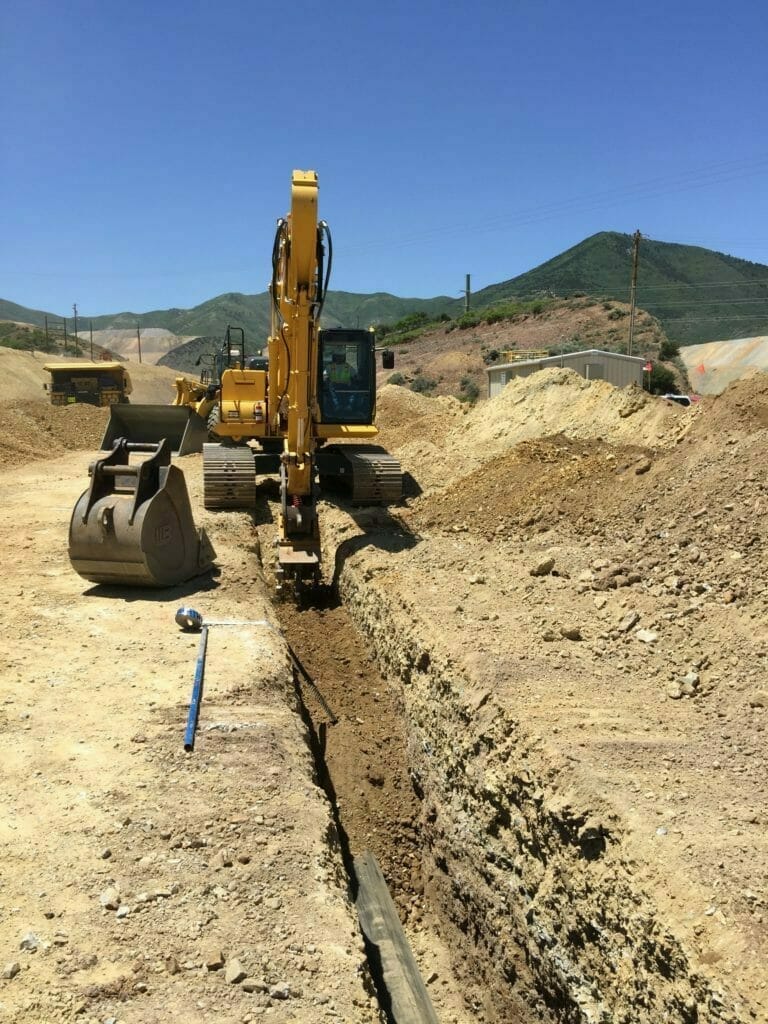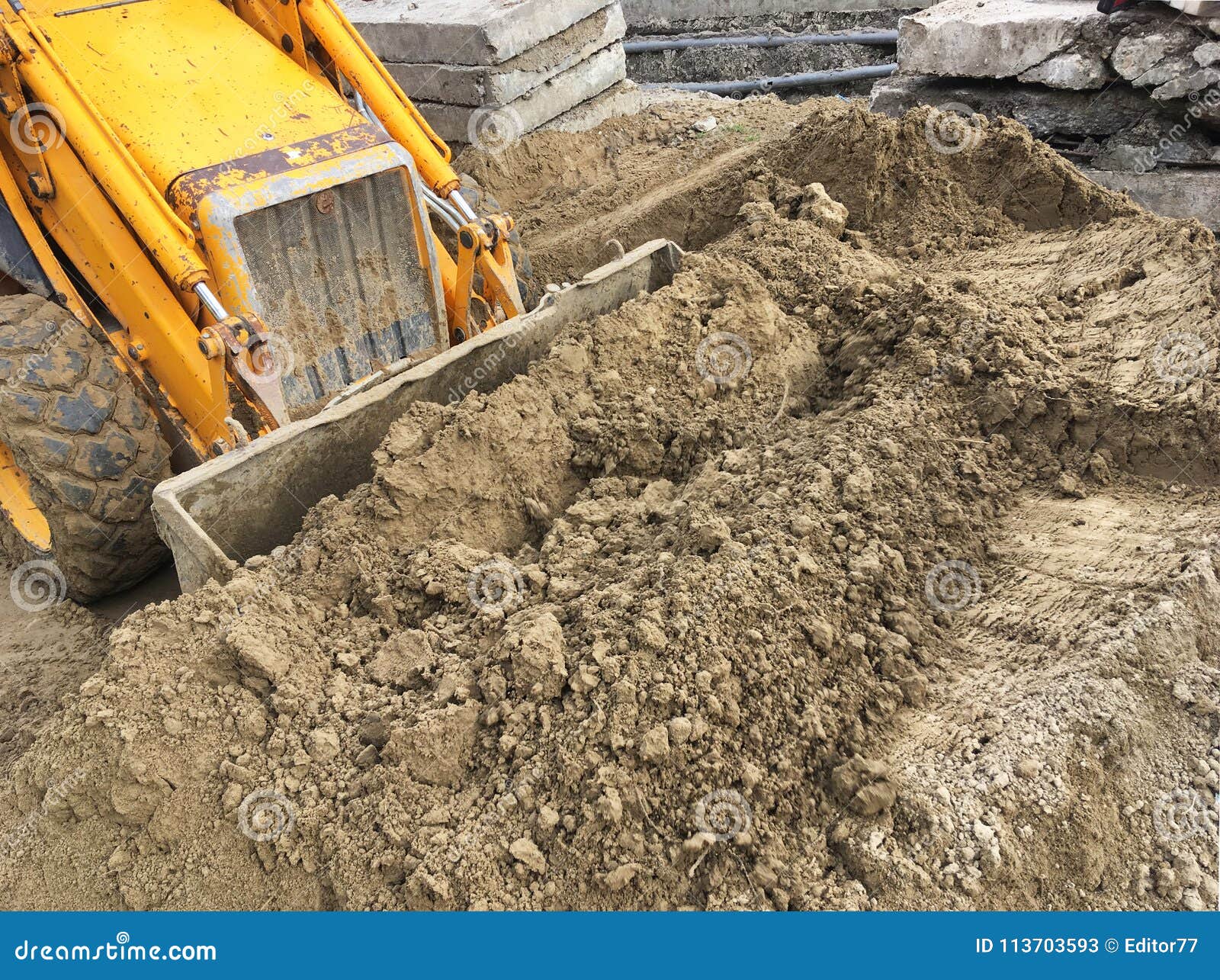Excavator for Beginners
Table of ContentsSome Known Factual Statements About General Contractor Concrete Contractors Things To Know Before You BuyThe Greatest Guide To General ContractorIndicators on Excavation Contractors Near Me You Should KnowOur Excavation Companies Statements


Scrapers or Pans excavate soil in one area, haul and also dump the soil in an additional area (mini excavator). It is hard to match the efficiency of scrapes for cut/fill soil operation if the haul distance is less then a mile. Scrapers are generally pulled by a rubber tire wheel tractor and are sometimes pushed via the cut area by an excavator.
There are sometimes that scrapers are not used for site grading and a dump vehicle is used: the haul might be to long, the haul might cross roads where scrapers are not permitted, acid rock might be encountered, equipment availability, etc. Unload vehicles remain in typical use and probably require little discussion.
Numerous trucks have a top-hinged tailgate that can not dump any kind of rock bigger after that the tailgate width. "Rock body" beds, on the other hand, have no tailgates and can unload any kind of size rock, although their volume ability is lessened. These web links show tools specifications for numerous usual dump trucks. Compaction Equipment raises the thickness of the soil and in some instances supplies a smooth, rolled surface.
The Basic Principles Of Excavation Companies
From an easy test pit to percussion drilling to core drilling the owner has increasingly more expensive options that generate significantly far better information concerning the website underground. As an example, the Proprietor on a 100,000 SF structure job might authorize twenty dull places with split spoon soil examples taken till rock is reached and after that core samples of rock.
Understanding the type and also high quality of rock (from the core samples) and area of rock (from the dirts boring) is a real benefit in jobsite preparation. Alternatively, the Owner of a 100,000 SF structure might choose to wage no geotechnical screening whatsoever. The decision about geotechnical screening is normally made by an Owner without input from the Building Supervisor.
The area on Dirts and also Geology assists you comprehend the terms in the geotechnical record. An understanding of the approximate location of the rock aids the Building and construction Supervisor to plan the sequence of actions complying with rock excavation. If rock is in one edge of a large structure project, for instance, the earth excavation might begin at the opposite end of the structure in order to start structure work soonest.
Starting the foundation job early would be a good concept if the rock could be eliminated by tearing. However, if the rock is exceptionally difficult as well as calls for substantial blasting, it may be sensible to hold structure work up until the blasting is finished. The Building and construction Supervisor must work with these kinds of decisions and also make use of all the technical date readily available.
Rumored Buzz on Concrete Contractors
Unidentified excavation states that all rock or various other unanticipated materials (leaving out dangerous products) run into in the sitework will be the responsibility of the Service provider at no modification in agreement expense. An unidentified excavation is easier from a book-keeping perspective and also places the duty for geotechnical conditions onto the Sitework Service provider.
Exactly How Water Affects Sitework? It's incredible what a hefty rainfall can do to a building project. Before the rainfall, the website might be dry, heavy devices effectively relocating planet, the various other trades efficiently executing their job. Within hrs the task can be a sloppy, mud-hole with worker efficiency reduced to regarding 10%.
In most locations of the globe, the Construction Supervisor need to bear in mind an easy truth: IT WILL RAIN. Great planning can reduce the damage and interruption of a heavy rain to a jobsite. Commonly the excavation and also grading is delegated the Sitework Service Provider (and also their Foremen is liable to oversee as well as guide the heavy equipment and operators).
Consequently the Construction Supervisor must be constantly conscious of what rain will do to the job site. It is not unusual for the Sitework Foreman to work their hefty devices for maximum performance and wish it does not rain. One of the most effective methods to get ready for rain is to incline all grades to drain pipes what is excavation and also to smooth rolled the surface prior to a rainfall.
Get This Report on Mini Excavator
The Building and construction Manager must be well-balanced sufficient to insure that heavy rain does not quit work on the job much longer than needed. Daily conversations with Sitework Foremen might be needed to accomplish this goal. At any time excavation is required below the existing water table on a project, the procedure of dewatering must be thought about.
In an absolutely natural dirt, the water travels so gradually through the clay or silt that dewatering is not normally necessary for the reasonably short time of excavation. Dewatering might be needed for a solitary ground excavation or for an entire job website. The most common dewatering approaches are trench drains pipes, deep wells and also well points.

Ground water seepage can also be lowered by cutoff approaches such as sheet loading. The prices for dewatering can be staggering, including devices rental, labor and electricity (or gas). High dewatering expenses have faded the revenue margins on far too many projects. The lots of variables provided below make the job of approximating dewatering prices really tough, as well as extremely inexact.
This alternative ought to constantly be taken into consideration when examining the prospect of dewatering. Undoubtedly the option is just practical if gravity can run the our website water to reduced ground. Trench drains can be reduced with a backhoe as well as full of a coarse, granular material (# 4 stone for instance), but treatment must be exercised in picking the water outlet kind and also location.
The 5-Second Trick For Demolition
A siphon, by interpretation, makes use of air pressure to bring water from one elevation, up over a barrier, to a reduced elevation. The pipelines in a siphon system have to be impermeable as well as some resourcefulness is frequently required to totally fill the siphon pipeline. The siphon pipe have to be complete for the siphon to start.
A deep well contains a pump, tube as well as a vertical well casing. The pump consumption is at the bottom of the well casing (generally some crushed rock is put there as a filter tool) (mini excavator). The water is inflated the hose pipe, out of the well casing, and also to an appropriate discharge area.
In a crude sand, for instance, a huge location can be pumped to near the pump intake elevation. A much less absorptive soil, on the various other hand, reduces the foundation excavation performance of a deep well. Considering that the pump is generally at the base of the deep well, there are no height restrictions due to vacuum lift, as well as deep wells can decrease the groundwater over 50 feet.
Under of the wellpoint there is a 2 foot long screen as well as shutoff, water jets out of this shutoff and produces an opening right into which the wellpoint pipe can be reduced. This opening is commonly made a bigger diameter (for instance 10 inches) to permit for a coarse sand backfill to help filter the water (excavating contractors).